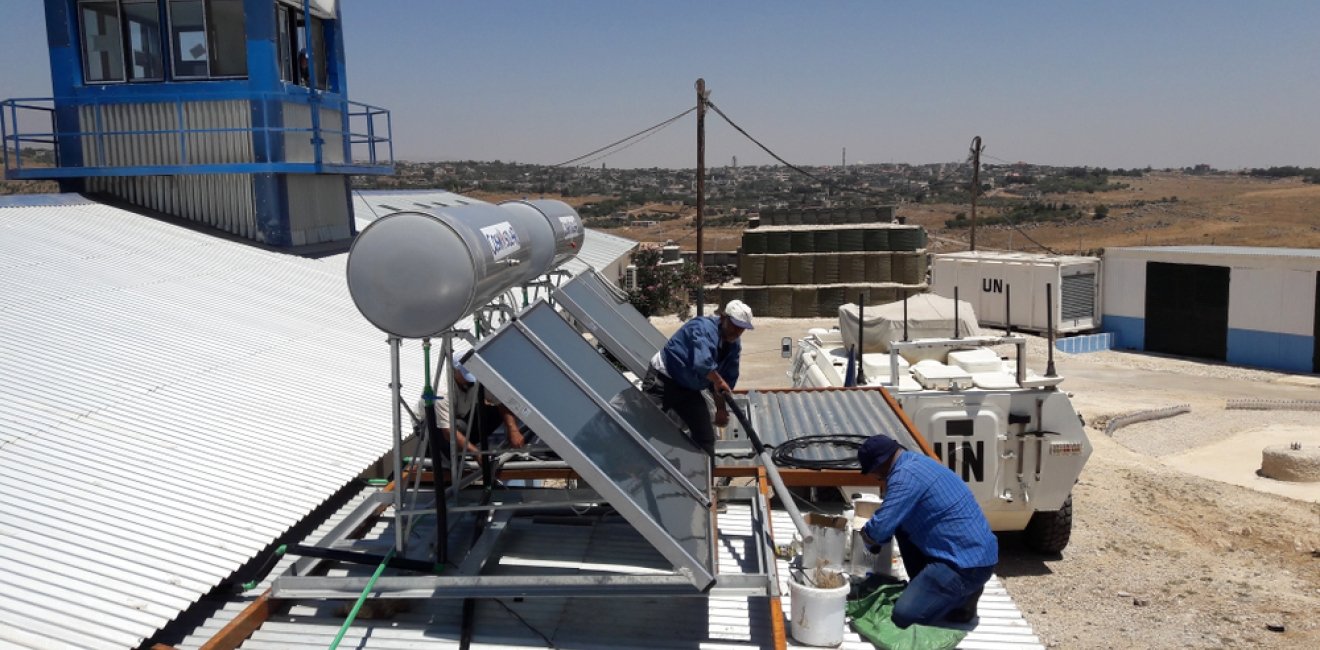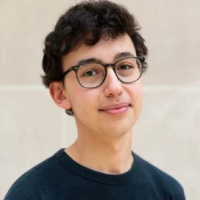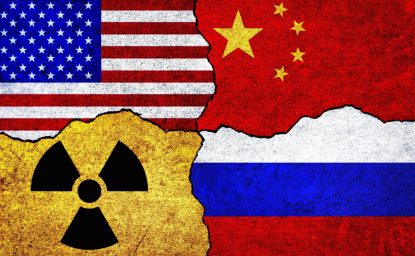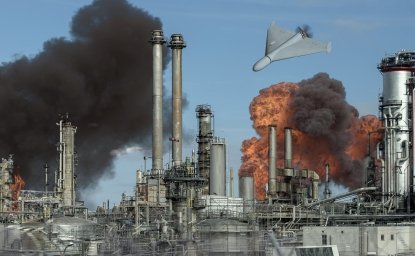In the 21st Century, a critical benchmark for governments has been their ability to keep the lights on in their citizens’ homes. Since 2021, Lebanon’s state-run electricity company, Électricité du Liban (EDL), has only been able to provide electricity for 1-3 hours a day. Consumers are forced to spend the remaining 21 to 23 hours either in darkness or privately source electricity at exorbitant rates.
At the moment, 97% of Lebanon’s energy supply is generated using oil, which the country imports at steep prices. This is unsustainable for a country that has been in economic freefall since 2019. The consensus is that Lebanon must rebuild its energy sector. But it’s an uphill battle, as the patchwork Lebanese parliament—currently operating with no president, prime minister, or head of its central bank—tries to negotiate with the International Monetary Fund (IMF) for a relief package. If Lebanon wants to begin to restore confidence, both domestically and internationally, it must do everything possible to turn the lights back on.
Lebanon’s solar prospects
A potential ray of light is a relatively under-the-radar project led by the Lebanese Center for Energy Conservation (LCEC). For over a decade, the renewable energy arm of the Lebanese Ministry for Energy and Water has been working toward a cleaner, greener future for Lebanese energy. For most of that time, it has been trying to get a national solar power initiative off the ground.
In 2017, the LCEC released an expression of interest (EOI) for the development of twelve 15-megawatt (MW) solar-photovoltaic (PV) farms to be spread equally across Lebanon’s four main regions: North Lebanon, South Lebanon, Mount Lebanon, and Bekka. The project, totaling 180 MW, was in many ways modest in scale; this amount can power roughly 30,000 homes annually. A mix of domestic and international energy companies were invited to submit bids for licensing to the LCEC, to be completed by 2020. The winning companies would then have one year to privately secure financing for the project, with development, construction, and energy integration into the EDL grid to be completed the following year.
According to this schedule, the project should have been up and running by now. But unforeseen delays plagued the solarization project even before it was launched.
According to this schedule, the project should have been up and running by now. But unforeseen delays plagued the solarization project even before it was launched. In 2019, Lebanon suffered an economic collapse and nationwide protests. In the first half of 2020, the COVID-19 pandemic hit the country hard, and in August of that year, Beirut was rocked by a massive explosion at its port. It was only in May 2022 that 12 companies of the 253 offers were selected to move to the next phase—three years behind schedule, and with Lebanon in a much more dire position.
The funding mechanism for the solar farms is also contributing to these problems. The goal was to make this energy inexpensive for consumers and profitable for companies but involve zero government spending. In recent years, while consumers got less electricity from the existing grid, the price increased. In November 2022, EDL raised the prices of electricity to $0.10 per Kilowatt hour (kWh) for the first 100 kWh used, and $0.27 per kWh after.
The solar project aimed to provide electricity at no more than a quarter of the current cost. The bids were based on a tariff system, whereby each company would have to submit a kWh rate proposal, and the lowest feasible rate in the region would dictate the charging price that all companies in that region would abide by. These were negotiated between the LCEC, companies in each region, and EDL. In the Bekka region, which has high solar irradiance, one company offered a price per kWh of $0.0057, so all operators in the region had to match. In the other three regions, the price was negotiated to be $0.0067.
Of the approved 12 bids, one company had to drop out in North Lebanon once these rates were set, as it was unwilling to provide energy at that price. Consequently, the overall MW capacity of the entire project dropped from 180 to 165, before any farms were even built.
The program itself costs $600,000 per MW, almost $100 million in total. In the original EOI, the LCEC demanded bidders submit bankable power-purchasing agreements (PPAs) that guarantee the companies raise the funds privately to completely construct, operate, and maintain the solar PV farms. The LCEC required that 30 percent of the funding be secured upfront and the remaining 70 percent in debt. Herein lies the problem: the companies were given approximately one year from May 2022 to secure the necessary funding to begin development, but none have. On May 8, 2023, the 11 companies signed their official contracts with the Ministry of Energy, but they do not have their funding yet. If the companies do not secure it, the program to electrify Lebanon with solar energy will remain a dream.
Time running out
If the projects were fully funded today, they would be finished by 2025. Additional delays in funding procurement will continue to push the timeline out. Pierre El-Khoury, Director of the LCEC who oversees this project, expressed great concern that the companies would not have the funding to begin the endeavor.
One question is whether any Lebanese authority can step in to jumpstart the process. In 2010, the central bank, the Banque du Liban (BDL) initiated the National Energy Efficiency and Renewable Energy Action (NEEREA) program, which is dedicated to financing green energy projects in the country. It could provide loans of up to $20 million. Unfortunately, after the 2019 collapse, NEEREA stopped receiving funding from the BDL and its capacity is now significantly limited. As part of its Sustainable Development Goals, the UN identified re-financing NEEREA as a top priority to increase renewable capabilities in Lebanon.
But an IMF program is still out of sight, given that Lebanon still must choose a president and a cabinet of ministers to ratify a deal.
The IMF potentially holds the key to this solar project. El-Khoury explained that while the IMF wouldn’t be directly involved in funding, “a green light from the IMF [is necessary] in order to fund these projects. Otherwise, these projects won’t see the light.” But an IMF program is still out of sight, given that Lebanon still must choose a president and a cabinet of ministers to ratify a deal.
Despite this, El-Khoury remains hopeful. He mentioned the French energy giant TotalEnergies, in conjunction with Qatar “Are willing to invest in one of these eleven solar farms…we are following up with Total[Energies] and the Qatari to see if they succeed in buying one of these licenses, one, [maybe] two, three [licenses]”. Additionally, when the LCEC announced the commission of the licenses last year, Gabriel De Lastours, regional head of the European Bank for Reconstruction and Development (EBRD), told PV magazine, “One of the things we are now working on is how to develop bankable solar projects relying on a power purchase agreement backed by a government in a comparable macro-economic situation to Lebanon.” Companies can also try to receive funding from institutions such as the International Finance Commission, the European Investment Bank, or the World Bank.
It's worth noting each of the projects is independent of the others, such that not all 11 need full funding in order for this project to move forward. Perhaps a more realistic goal is for each to move at its own pace.
Success at this stage is critical: In 2018, a year after this project was first launched, the LCEC released a second EOI time for a 300MW project, almost double the size of the current one. However, El-Khoury said that it has been put on hold indefinitely. If this current project fails, there is obviously no point in trying to scale it up.
The solar solution
As the one-year deadline to achieve bankability approaches, there is no sign the 11 solar PV companies can move into the development stage. The LCEC keeps working with the EDL to ensure the success of this project, while concurrently pursuing other solar ventures. According to former US Ambassador to Lebanon and Wilson Center Global Fellow David Hale, a public push among the Lebanese people can be crucial to the success of an energy project like this.
For example, despite Hezbollah’s vehement opposition to the 2022 Maritime Deal with Israel, he believes public pressure partially forced the government to act. Aggressively advertising this solar project among consumers in each region, who will then pressure members of parliament to help the LCEC, can help move this along.
On the other side, the international community must work to ensure this project does not fail. Even if the IMF cannot sign an agreement with Lebanon, it can urge smaller financial institutions to support these types of initiatives, especially as it promotes sustainability and clean tech initiatives.
An increase in solar output can decrease reliance on imported petroleum, releasing funds for the government to spend on social and economic services.
TotalEnergies, QatarEnergy, the EBRD, and other institutions should not let this opportunity slip. The LCEC can extend the PPA deadline, but unless these companies are able to reach agreements, the Lebanese people will still face an electricity crisis. An increase in solar output can decrease reliance on imported petroleum, releasing funds for the government to spend on social and economic services. For the international community, a solar-powered Lebanon is a better Lebanon.
Investing in Lebanon’s solar future isn’t just an investment that will greatly improve the quality of life for the Lebanese people but will also reduce Lebanese reliance on the international community in the energy sector. And if Lebanon can provide its citizens with energy, the Lebanese government will be in a stronger position to begin the structural reforms the international community requires because it will have popular support.
Before 2019, Beirut was tapped to be a hub for startups and businesses, and with reliable energy, it can be again. With a mix of domestic and international support, this project can be a catalyst for change.
The views expressed in these articles are those of the author and do not reflect an official position of the Wilson Center.








